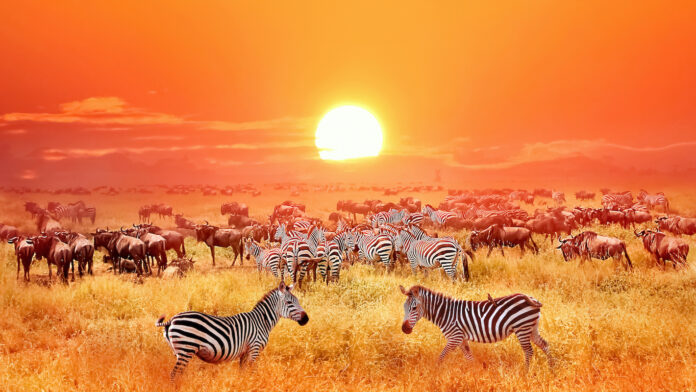AMMAN: As borders open again after COVID-19 lockdowns, most of us are likely eager to indulge in recreational traveling. But where to go? And what’s safe?
A wildlife safari in Africa is an excellent alternative to the standard travel destinations, and Tanzania is a welcoming place for Muslims, with many mosques and halal food readily available. All the staff we met were vaccinated, but public adherence to COVID precautions in Tanzania’s cities is lax.
There are 22 reserves, national parks, and protected areas in Tanzania, and deciding which to visit and when depends on several factors. First, how much time do you want to spend? Second, what do you want to see? Birds? The big cats? Elephants? Primates? Wildebeest migration? Third, when do you want to go (basically a choice between the rainy or dry seasons)? And fourth, what’s your budget? Tanzania offers something for everyone, from five-star hotels and high-end lodges with private cabins, through luxury bush camps to tented camps with minimal facilities. Safari categories include budget, comfort, standard and deluxe.
Ngorongoro Crater is the collapsed caldera of an ancient volcano. (Shutterstock)
We’d recommend using a safari specialist to tailor your ideal trip for you. Any safari package should include all fees and documentation to enter the game reserves, lodging, a driver/guide, a four-wheel-drive vehicle, and three meals a day.
Those meals are generally buffet-style for breakfast and dinner, with boxed picnic lunches ranging from standard-issue to fine-dining. Special dietary needs can generally be accommodated.
A safari has something for everyone: An education for the young ones, lessons on conservation for everyone, and an opportunity to unplug from life’s stress. Besides the main attraction of the animals, safaris offer a real opportunity to see how the locals live and perhaps broaden your perspective on life.
Hadzabe tribesmen at Lake Eyasi. (Shutterstock)
Arusha was the starting point for our seven-day safari with a morning pickup at the airport and an afternoon drive through Arusha National Park. We then headed west toward Karatu to the beautiful Marera Mountain View Lodge, located centrally on the Northern Circuit, where we spent the next four nights.
Tarangire National Park — our destination on day two — set the bar high for the rest of the trip because of the unbelievable number and variety of animals we saw, especially elephants and zebras. It would prove hard to beat.
For a cultural experience, stop at Lake Eyasi — not a nature reserve but home to two indigenous tribes. The Hadzabe bushmen are primitive hunter-gatherers who will show you how they hunt, dig for tubers, and make fire. The Tindigi grow crops and are metal forgers, making arrowheads for the Hadzabe and bracelets for tourists to buy. Both tribes still live their lives in much the same way as their ancestors did, without the trappings of the 21st century.
Marera Mountain View Lodge, Karatu. (Image credit: Susan Helke)
We also stopped off at Olduvai Gorge, also known as “The Cradle of Humankind.” This became one of the most important paleo-anthropological sites in the world when fossilized bone fragments and artifacts were discovered in the 1950s that documented the evolutionary history of stone-tool-using hominids over the last 2 million years.
Then it was on to the main attraction of the trip — Serengeti National Park. We started with a short afternoon safari before arriving at Tanzania Bush Camp, where we would spend the next two nights. This was billed as luxury camping. Although “luxury” seemed to be overstating it when tents have to be zipped up tight because hyenas will steal shoes and other “tasty” objects and you’ll likely wake during the night to sounds of wild animals nearby.
Serengeti started before dawn, and there were several families of lions and cheetahs feasting on their prey. (Shutterstock)
Our first full day in the Serengeti started before dawn, and we saw several families of lions and cheetahs feasting on their prey. Overhead, hot air balloons circled. We also saw wildebeest, leopards, impalas, crocodiles, gazelles, ostriches, hippos, zebras, Cape buffalos, elephants, and eagles, vultures, flamingos, and egrets. An impressive collection for a single day.
Our last stop was a journey east to Ngorongoro Crater, the collapsed caldera of an ancient volcano, teeming with animals on the crater floor. Here, on a good day, you might see one of the 50 endangered black rhino that live there.
A safari through Tanzania offers a temporary step back from the modern world and a chance to sit back and reflect on what we actually “need” to exist and enjoy life and on how important it is that we preserve such fragile ecosystems — not only in nature reserves but also in our own back yards.

